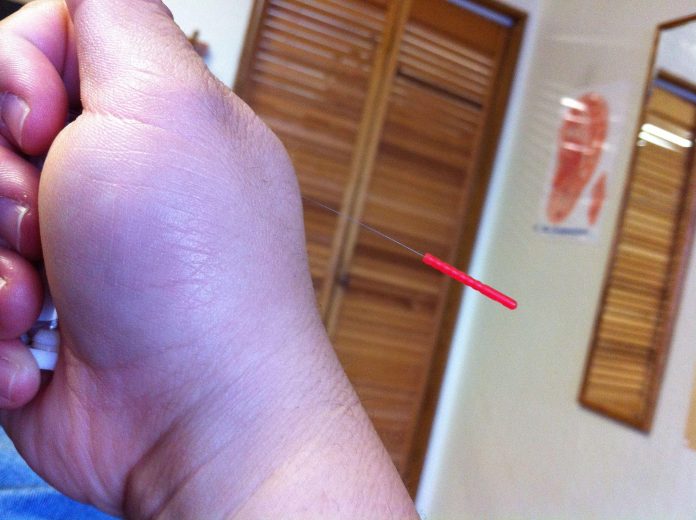In the realm of pain management, where modern medicine and ancient practices often intersect, acupuncture emerges as a compelling contender. This age-old technique, rooted in traditional Chinese medicine, involves the strategic insertion of fine needles into the skin, promising relief and balance. As the opioid crisis looms large and the demand for holistic approaches rises, the question arises: Should acupuncture be considered a first-line treatment for pain management? Delving into scientific studies, patient testimonials, and expert opinions, this article explores the potential of acupuncture to redefine our approach to alleviating pain, while weighing its benefits against conventional methods. Acupuncture and Pain Relief”>
Acupuncture and Pain Relief”>
Exploring the Science Behind Acupuncture and Pain Relief
The intricate practice of acupuncture has piqued the interest of both practitioners and patients alike, particularly in its role in alleviating pain. At the heart of this ancient technique is the belief that the body contains pathways known as meridians, which facilitate the flow of life energy or “Qi.” Acupuncture aims to balance this energy by inserting thin needles into specific points, purportedly influencing the central nervous system and releasing natural painkillers such as endorphins.
Scientific investigations into acupuncture’s effectiveness have yielded mixed results. Some studies suggest that acupuncture can significantly reduce pain by:
- Stimulating nerve fibers that send signals to the brain to release neural hormones.
- Modulating inflammatory markers that contribute to pain sensation.
- Altering brain chemistry by changing the release of neurotransmitters and neurohormones.
Despite these findings, skeptics argue that the benefits may be due to the placebo effect, where patients experience improvement simply because they expect the treatment to work. Thus, while acupuncture shows promise, further research is needed to fully understand its role in pain management and determine whether it should be considered a primary treatment option.

Traditional Practices Meet Modern Medicine: A Balanced Perspective
In the realm of pain management, acupuncture has emerged as a fascinating intersection of traditional practices and modern medicine. While some healthcare providers view it as a complementary therapy, others advocate for its use as a potential first-line treatment. This divergence in opinion stems from acupuncture’s ability to address pain through a holistic approach, aligning with the body’s natural healing processes.
Several key benefits support its consideration in pain management strategies:
- Non-Invasive Approach: Acupuncture offers a drug-free, non-surgical option, reducing the risks associated with pharmaceutical side effects.
- Customization: Treatment plans can be tailored to individual needs, addressing specific pain points and overall well-being.
- Integration with Conventional Therapies: It can be seamlessly combined with other treatments, potentially enhancing overall effectiveness.
However, there are also considerations to keep in mind. Challenges include:
- Varied Efficacy: Results can differ significantly between individuals, necessitating a personalized approach to assess effectiveness.
- Regulatory Standards: The lack of standardized practices can affect the quality and consistency of treatments.
Ultimately, integrating acupuncture into pain management requires a balanced perspective, respecting both its ancient roots and the rigor of modern medical evaluation.

Comparing Efficacy: Acupuncture Versus Conventional Pain Treatments
In evaluating the effectiveness of acupuncture compared to conventional pain treatments, it’s essential to consider both scientific research and patient experiences. Acupuncture, an ancient practice rooted in traditional Chinese medicine, involves inserting thin needles into specific points on the body to alleviate pain and promote healing. Recent studies suggest that acupuncture may be beneficial for conditions such as:
- Chronic lower back pain
- Migraine headaches
- Osteoarthritis
Conversely, conventional pain treatments, including medications like NSAIDs and opioids, physical therapy, and surgical interventions, have long been the standard in Western medicine. These methods are supported by extensive clinical trials, yet they often come with potential side effects and risks, such as dependency or invasive procedures. Patient preference often plays a significant role in treatment choice, with many seeking acupuncture for its holistic approach and minimal side effects. Ultimately, the decision between acupuncture and conventional treatments should be guided by a comprehensive evaluation of individual patient needs, medical history, and professional medical advice.

Guidelines for Integrating Acupuncture into Pain Management Strategies
When considering the integration of acupuncture into pain management strategies, it’s essential to adhere to specific guidelines to ensure both effectiveness and safety. First, collaborate with healthcare professionals to create a comprehensive treatment plan that includes acupuncture alongside conventional therapies. This multidisciplinary approach can enhance overall outcomes.
Here are some key considerations for integrating acupuncture:
- Patient Assessment: Conduct a thorough evaluation to determine if acupuncture is suitable for the individual’s condition.
- Qualified Practitioners: Ensure that treatments are administered by licensed and experienced acupuncturists.
- Tailored Treatments: Customize acupuncture sessions based on the patient’s specific pain profile and response to previous treatments.
- Monitoring Progress: Regularly assess the patient’s progress and adjust the treatment plan as necessary.
By following these guidelines, acupuncture can be effectively woven into a broader pain management framework, offering patients an additional avenue for relief.





